Updated: 24-Mar-2021
Liberty is a name given to a series of engines urgently developed during the First World War, around 1917 and that had to be built by several automotive companies capable of carrying it out as soon as possible, thanks to their available means, techniques and materials.
-The name given to it by the Signal Service was "Liberty engine".
-The most significant was the V-12 model, with twelve V-cylinders. It was comparable to its European counterparts in weight, power, consumption, etc.

"Presentation of the Liberty"
-As we will see, the Liberty range was raised as a line of 4, 6, 8 and 12 cylinder engines.
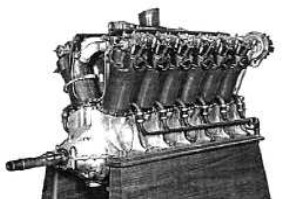
“V-12 made by Ford”
-Many modifications and adaptations of all kinds were made in order to develop all the possibilities of the initial design. Needless to say, it had its hand in the Allied victory in wartime.
-The design process went very fast and so went the start of production. But it is worth telling how it happened.

“V-12, A version”
-The birth was in April 1917 after the American losses by German submarines in the Atlantic.
-No allocations were spared from the US Congress and under the direction of Colonel E. Deeds they started working on it.

“Three views of the A version engine”
-The most powerful producers of aviation engines in V-12 at the moment were Curtiss (with its Kirkham K-12) and Hall-Scott, but that was insufficient for the 60° project for the Navy that until then had used the A-5, A-7, A-2 and A-3 and therefore offered sufficient guarantees.

“Liberty V-12, another view”
-Packard also had experimental V-12 engines like the models 1, 2 and 3 (the latter of 905 cu. in., which would be the "father" of the Liberty V-12).
-Officially it has been said that Deeds "locked-up" J.G.Vincent from Packard and Elbert J. Hall from Hall-Scott in a hotel room at the Willard in Washington.
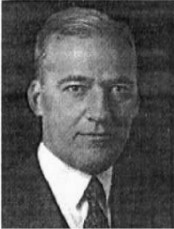
"Elbert J. Hall"
-In 5 days they had the bases for Liberty engines, each one provided the details of their products.
-For example, Packard was influenced by the individual Mercedes-type cylinders, that were used in their engines.
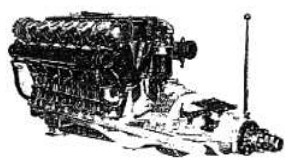
“Liberty marine engine”
-As an added curiosity, the Liberty were also used in the Navy by the US Coast Guard to hunt down smugglers at the time of the alcohol ban.
-The first engine to come out was the upright, inline, 4-cylinder (year 1918) giving 100 HP. It was known as the L-4.

“Liberty L-4”

“L-4, front view”
-The L-4 was built in small quantity by the Hudson Motor Car Co.
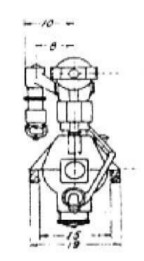
“L-6, schematic drawing rear”
-It is noted that all the Liberty had the Delco ignition system, that is, they needed a battery and an external generator.
-The Delco was installed at the rear end of the camshafts (SOHC) that are over the cylinder heads on all models. See L-4, L-6, L-8 and V-12 (L-12).
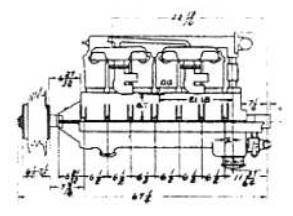
“L-6, schematic drawing, side view”
-The L-6 gave 200/215 HP and was an extension of the L-4.
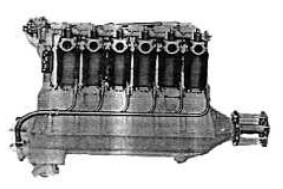
“L-6”
-Only 52 L-6 engines were built by Thomas Morse, Wright, and Hall-Scott.
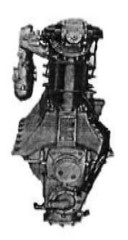
“L-6, rear view”
-Now we come to the 400 HP V-8 engine, following the same style of cylinders, camshaft, Delcos and the same ribs on the cylinder base blocks.

“Liberty V-8”
-In the beginning the Liberty V-8 gave 250 HP and although it was prospering, the congenital vibrations made its production was minimal.
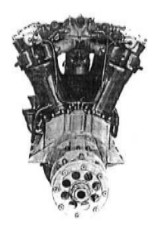
“V-8, front view”
-The V-8 (L-8) was manufactured by Marmon-Brick. In fact, it was a design based on a Packard model, so in July 1917 (on Independence Day) he delivered the engine in Washington, that is, one month after its birth. Buick made 15 engines.

“L-8 on a truck”
-In summer it was tested at 14,110 ft. of altitude on the Pikes Peak mountain, on the same truck that transported it. This new photograph of the Liberty V8 is provided in order to better see the location of the spark plugs on the cylinder heads, one on each side of the valve bulges.
-We can also see the water flow from the pump to the cylinder bases and the single outlet through the upper part of the engine, towards the possible radiator.
-At the rear there is the transmission to the camshaft, slightly inclined, on the left and the delco for that row of cylinders.
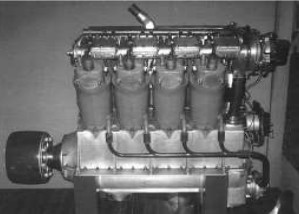
“Liberty V-8”
-The V-8 designation is generic due to the cylinder arrangement. The engine itself was the L-8 model.
-This particular engine was manufactured at the Packard Motor Car Co. in Detroit, Michigan, in 1917.

“L-8, rear view”
-Three months after the start of the Liberty project, the V-12 was already on the table, and was also manufactured in record time.
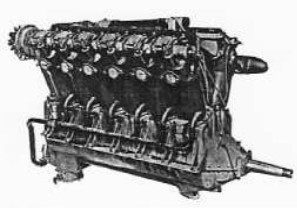
“L-12”
-The L-12A from 1917 was designed for 350 HP, and stabilized with 410 HP at 1,700 rpm and 450 HP at 1,940 rpm.
-These engines had about 1650 cu. in. of total displacement. It was the main production version.
-From the V-12 there were variants on the basic model, with gearbox, supercharged. They also inverted the V with an air-cooled and water-cooled version.
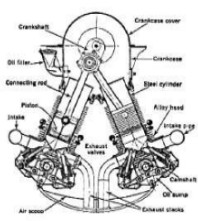
“L-12, inverted, air-cooled”

“Liberty V-12 inverted, water-cooled”
-The tuning problems for the inverted engines delayed them coming out until well after the war, 1923.
-The inverted versions were carried out by Allison. Only about 20 of these engines were built.
-There was also an air-cooled upright V version, made by Wright in 1923.
-The Cylinders were made with a smaller outer diameter due to the fins and displacement was decreased from 1,650 to 1,410 cu. in. For a weight loss of only 14 pounds.
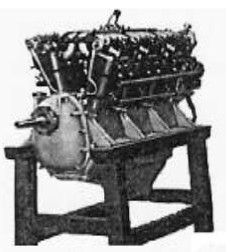
“Packard V-12”
-They were derived from the Packard V-12 which we can see below with a gearbox compared to the Liberty V-12, with a gearbox as well.

-The geared Liberty engines were the L-12C from 1919. They were based on the -A model, but after flight tests the projects were abandoned.
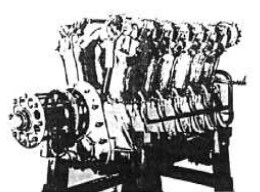
“L-12C”
-The gears used in these gearboxes are superimposed. An epicyclic gearbox version is shown below.
-These engines had Moss turbochargers, as we can see below. It is an L-12B.

“L-12B, with epicyclic gearing”
-During the years 1930-1942 information on the Liberty L-12 with 1650 cu. in. was entered in the USNA archives with reference 2862-452.8.
-And on the inverted V-12, with number 3156-452.8.
-And the one with an epicyclic gearbox, with bevel gears, was entered with number 3285-452.8. Year 1936.
About 250 geared L-12B engines were built under contract for the US Navy. The gearbox has a certain resemblance to that of the Rolls-Royce Eagle.

“L-12, with Moss supercharger”
-They were supercharged by GE centrifugal blowers and with Moss turbochargers like the one in the above illustration, (without gearbox).

“Supercharged Liberty engine”
-Like the Moss and GE turbochargers there was another brand named Sherbondy.
-They were installed on the Liberty V-12 it looked similar to those mentioned above.
-The Sherbondy supercharger was a design by E.H. Sherbondy, who was a consulting engineer from the US War Department and the Naval Consulting Board.
-He is the author of an important book, "Textbook of Aero Engines" (1920), from the same time as Glenn Angle, the other important author of another "mythical" book, "Airplane Engine Encyclopedia" (1921).

“Liberty with Sherbondy supercharger”
-In England, Liberty V-12 engines were installed in tandem on the Bristol Braemar II transport aircraft.
-They were installed rear-to-rear, and they acted as puller and pusher.
-A common gondola was wrapped around them, and in the center the air intakes and filters were sticking out from the top.
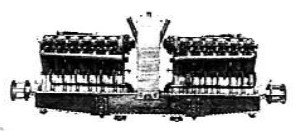
“Two Liberty engines in tandem”
-Another curious version of the V-12 was the the double-crankshaft, cannon engine, just as we can guess in the below photograph of the engine seen from the rear.
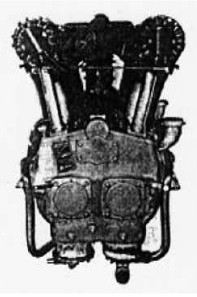
“Liberty with double crankshaft”
-After the Liberty V-12 series, the 24 X appeared, which were two V-12 engines placed around a single crankshaft.
-This experiment was carried out at McCook Field.
-This engine gave 720 HP at 1,792 rpm. There were broken parts due to added efforts.
-This led to the redesign of the connecting-rod system, which previously was a normal connecting rod in the left block and a fork in the right (the cylinders were facing each other), in the X-24 they took the form as shown below:

“Connecting-rod system for X-24”
-The lateral appearance of the engine was as shown below.
-We can see the seam of the upper half-crankcase of one engine attached to the same part of the lower engine.
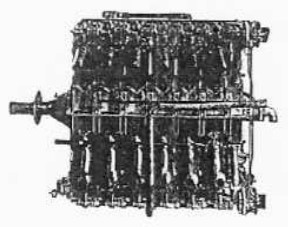
“Liberty X-24”
-It was only an experiment in the search for greater powers. We see this engine again on a test bench.
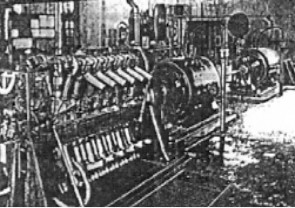
“Liberty X-24 on test bench”
The L-12 did not have the typical placement of the cylinder rows at 60° from the V-12, for a perfect “geometric cylinder angle” equal to the “firing angle” for a more regular run. They had the angle at 45°.

“Liberty front and rear view”
-Between 1917 and 1919, thanks to Detroit car companies, the production of the L-12 engine was massive, exceeding 20,000 engines.
-The production distribution was as follows, in order of quantity:
-6630 by Packard.
-6500 by Lincoln Motors.
-3950 by Ford.
-1000 by Nordyke & Marmon.
-1 by Trego (plus land, tanks, etc.).
-Lincoln Motors was formed precisely in August 1917 for the sole purpose of manufacturing Liberty engines.
-It was installed in the abandoned factory of Warren Motor Car that failed, although they had to build new facilities.
-Lincoln has reached our days manufacturing luxury cars.
From Appendix 6: The 45°-V 12-cylinder Liberty engine on display at the San Diego Museum is an L-12A model that does not appear in the main text.
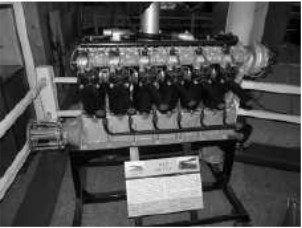
“Liberty L-12A”
-Using an angle between cylinder blocks of only 45° instead of the logical 60° (cylinder angle equal to the ignition angle, that is 720 ° of the two turns for the 4-stroke cycle: 12 cylinders = 60°), was to offer less frontal area of the engine.
-It had a displacement of 1649 cubic inches, depending on versions.
-It gave 400 HP at 1,800 rpm it would reach 440/450 in other evolutions.
-It was the first American engine to use a turbocharger.
-It was also the only American engine that entered combat in WWI.
-It was designed in July 1917, in 1921 it reached 40,800 feet in altitude, thereby achieving the world record.
-20,000 engines were built between several American manufacturers.
-There were two valves and two spark plugs per cylinder. One camshaft on each cylinder block.
-They had two Zenith carburetors and Delco ignition system of the same type used for Packard cars.
-Do not forget that the design was made by a team that was made up of engineers from Packard and Hall-Scott.

“Liberty L-12B”
-We also see that he used epicyclic gearing to obtain better performances with the propeller.
-This engine gave a lot of experience in the Army Air Service, at their McCook Field and Wright Field experimentation bases.
We now have two new images of the air-cooled upright Liberty V-12. It also exists in inverted V, see main text.
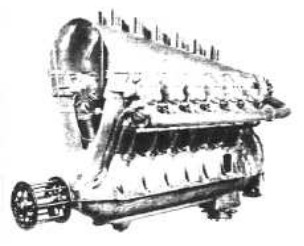
“Upright Liberty V-12, air cooled”
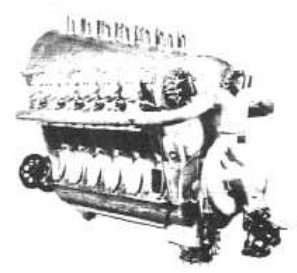
“Another angle for the air-cooled V-12”
-The famous American Liberty engines, built at the end of the WWI with the production distributed among the main brands of the moment. But its effective life lasted well into the 1930's.
-Precisely for this long life, it underwent all kinds of modernizations, the main ones were done by Allison, an expert, especially in gearboxes.

“Liberty engine modernization at Allison”
-Among the different examples of modernizations, Allison focused on the installation of gearboxes for propellers of different shapes.
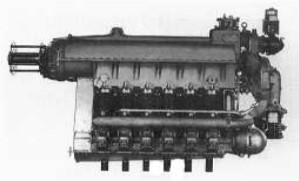
“Inverted Liberty with integrated gearbox”
-This modification with integrated epicyclic gearing at the front of the engine is due to Allison.
-Another simpler solution is that of an “added” gearbox, which is easier to install.

“Added gearbox”
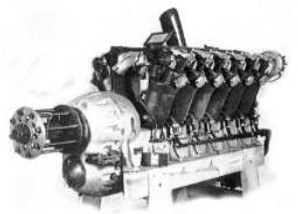
“Liberty with overlapping 2-speed cylindrical gears”

"With gearbox, supercharger, intercooler, etc"
-Other modifications or variations on the original design were the engines with inverted cylinders, air- and water-cooled, and of course the air-cooled upright V-engine.
-In the main text we have other variants such as the double crankshaft, or the X-engine.
-In total some 20,000 Liberty were made of which almost 3,000 were modernized by Allison as seen above.
-We do a little review on three more engines, the mentioned variants.
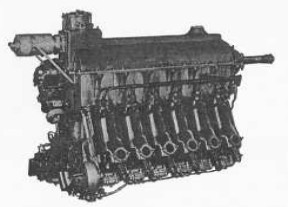
“Liberty, inverted and water cooled”
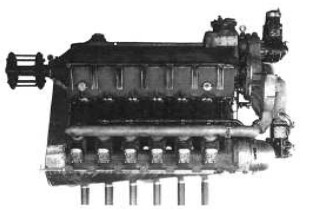
“Liberty, inverted and air cooled”

“Liberty upright V-engine air-cooled”
-We located new variants that enriches the photographs of this engine exposed in the main text.
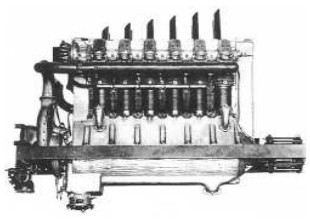
“Supercharged Liberty engine”
-It has no gearbox but it is mechanically supercharged and has the exhaust sticking out from the top, directly into the air. Curiously air-cooled.
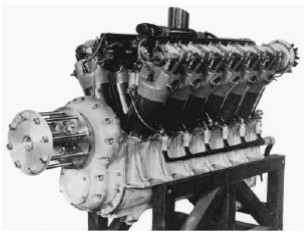
“Liberty L-12 with an impressive gearbox” photo AEHS
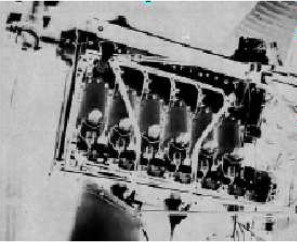
“Inverted Liberty L-12” (PiP)
-This inverted 12-cylinder V-shaped Liberty is water cooled. The inverted air-cooled version was made by Allison as V-1410 (see).
-The one in the photo was installed on a 1926 Amphibian Loening.
From Appendix A7/6: After WWI, Liberty engines were used in land and marine vehicles to set speed records.
-In the examples shown below, several engines (two or four) were coupled to obtain maximum powers at the time.

“Two Liberties on a car”
-A more spectacular case in those postwar days was perhaps a speed-record boat with four Liberty aviation engines, which we see in the illustration below.

“American speed-record boat”
-The exhaust pipes pointing to the sky are amazing. It would be very exciting to hear the four engines, that is, the 48 free exhausts at full power.
-And the same boat showing the fitting of the four engines, misaligned because of the transmissions.
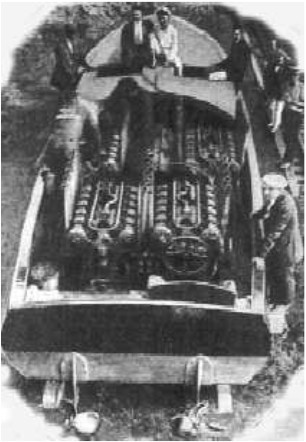
“Nice view of the engine room”
-For multiple couplings of Liberty engines in aviation, see the case of “Gallaudet”.
From Appendix 10: We have these additional illustrations of the Liberty inverted V-12 version.
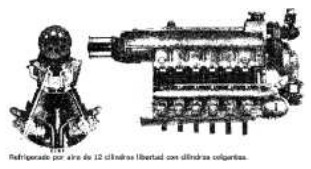
“Front and side view for the inverted V-12”

“Airplane with inverted V-12 installed”

“Inverted V-12 cross-section”
Engines of LIBERTY
Model: L-12
Arquitecture: 12-cylinder V-Engine
Cooling:
Total Displacement:
Bore / Stroke:
Power:
Weight:
Model: L-12 inverted
Arquitecture:
Cooling:
Total Displacement:
Bore / Stroke: x
Power:
Weight:

"Liberty L-12, inverted, air-cooled"
Model: L-12A
Arquitecture: 12-cylinder V-Engine
Cooling: Liquid
Total Displacement: 1650 cu. in.
Bore / Stroke:
Power: 410 HP @ 1700 rpm
Weight:
410 HP at 1700 rpm
450 HP at 1940 rpm

"Liberty L-12"
Model: L-12B
Arquitecture: 12-cylinder V-Engine
Cooling:
Total Displacement:
Bore / Stroke:
Power:
Weight:

"Liberty L-12B, with epicyclic gearing"
Model: L-12C
Arquitecture: 12-cylinder V-Engine
Cooling:
Total Displacement:
Bore / Stroke:
Power:
Weight:

"Liberty L-12C"
Model: L-4
Arquitecture: In-line
Cooling:
Total Displacement:
Bore / Stroke:
Power: 100 HP
Weight:

"Liberty L-4, half front view"
Model: L-6
Arquitecture: 6-cylinder In-line
Cooling: Liquid
Total Displacement:
Bore / Stroke:
Power: 215 HP
Weight:

"Liberty L-6"
Model: L-8
Arquitecture: 8-cylinder V-Engine
Cooling: Liquid
Total Displacement:
Bore / Stroke:
Power: 400 HP
Weight:

"Liberty L-8, rear view"
Model: V-12
Arquitecture: V-Engine
Cooling:
Total Displacement:
Bore / Stroke:
Power:
Weight:

"Liberty V-12 by Ford"
Model: V-12 upright, air-cooled
Arquitecture: 12-cylinder V-Engine
Cooling:
Total Displacement: 1410 cu. in.
Bore / Stroke:
Power:
Weight:
Model: V-12, double crankshaft
Arquitecture: 12-cylinder V-Engine
Cooling:
Total Displacement:
Bore / Stroke:
Power:
Weight:

"Liberty engine with double crankshaft"
Model: V-12, inverted, water-cooled
Arquitecture: 24-cylinder Inverted V-engine
Cooling: Liquid
Total Displacement:
Bore / Stroke:
Power:
Weight:

"Liberty V-12 inverted water-cooled"
Model: V-8
Arquitecture: 8-cylinder V-Engine
Cooling: Liquid
Total Displacement:
Bore / Stroke:
Power: 250 HP
Weight:

"Liberty V-8"
Model: X-24
Arquitecture: 24-cylinder X-engine
Cooling:
Total Displacement:
Bore / Stroke:
Power: 720 HP @ 1792 rpm
Weight:

"Liberty X-24 engine"


